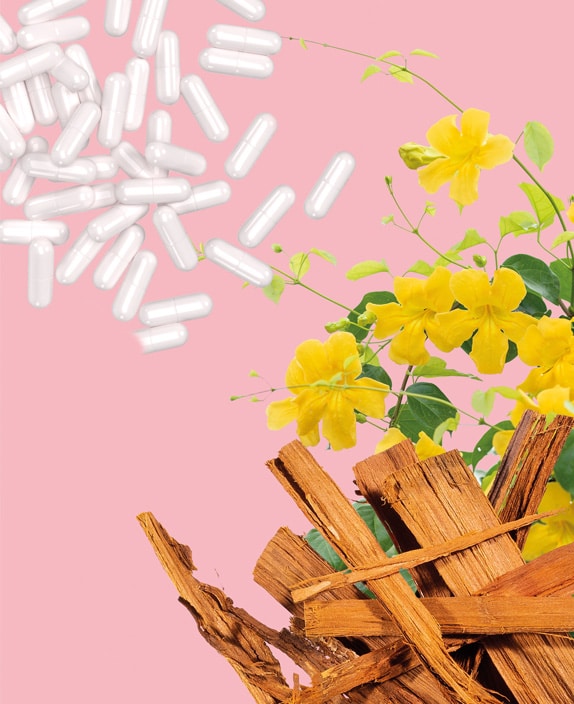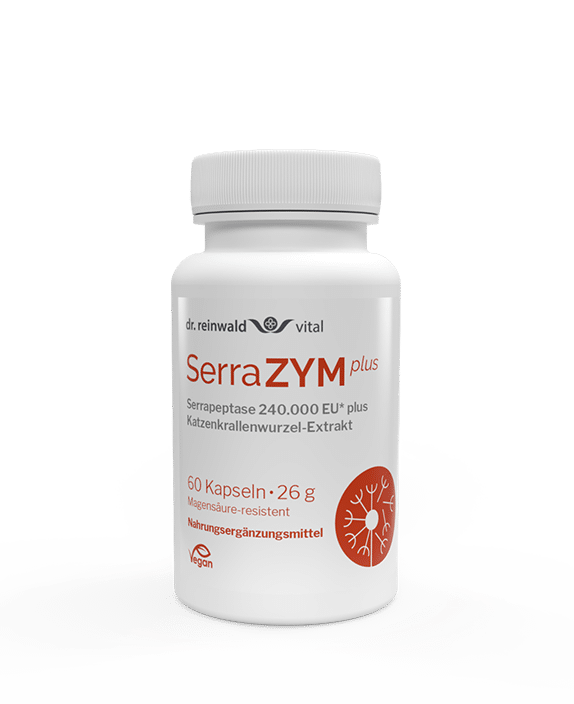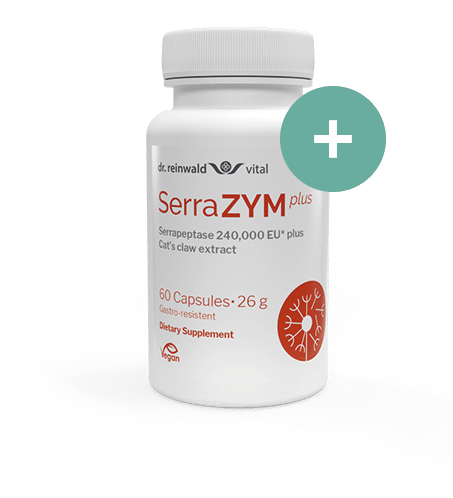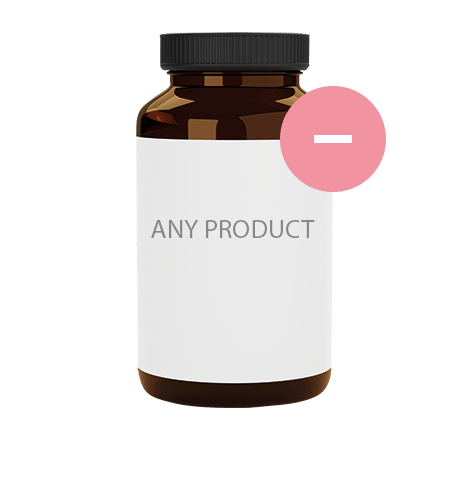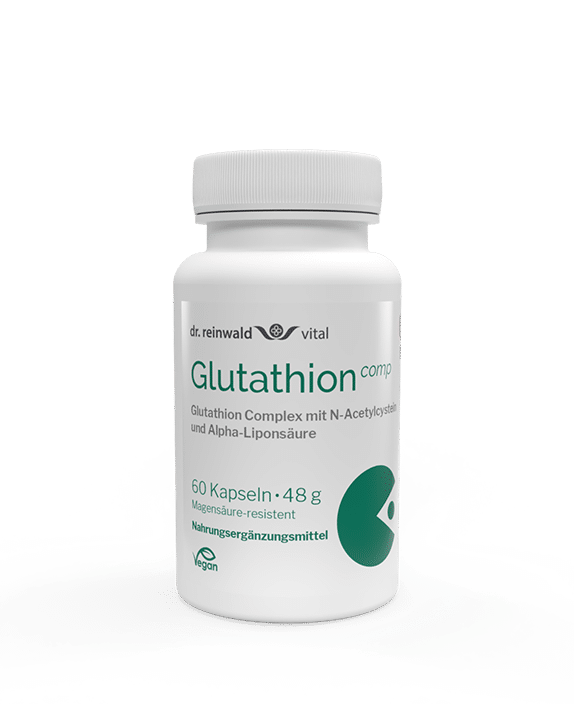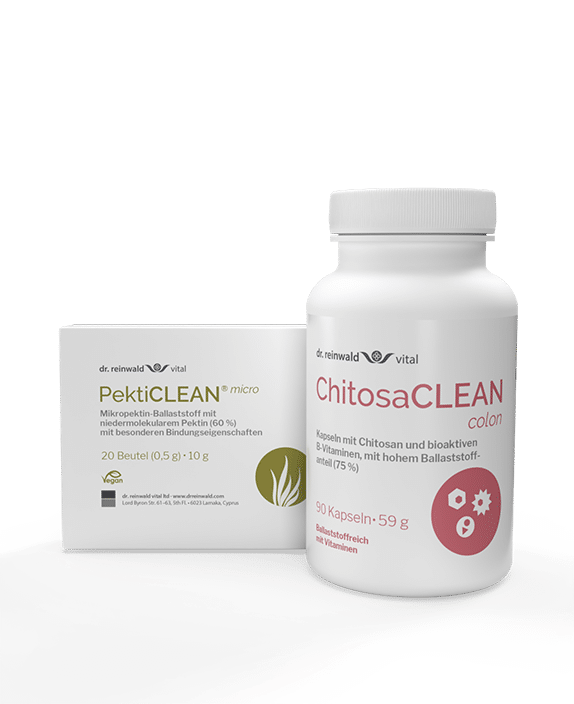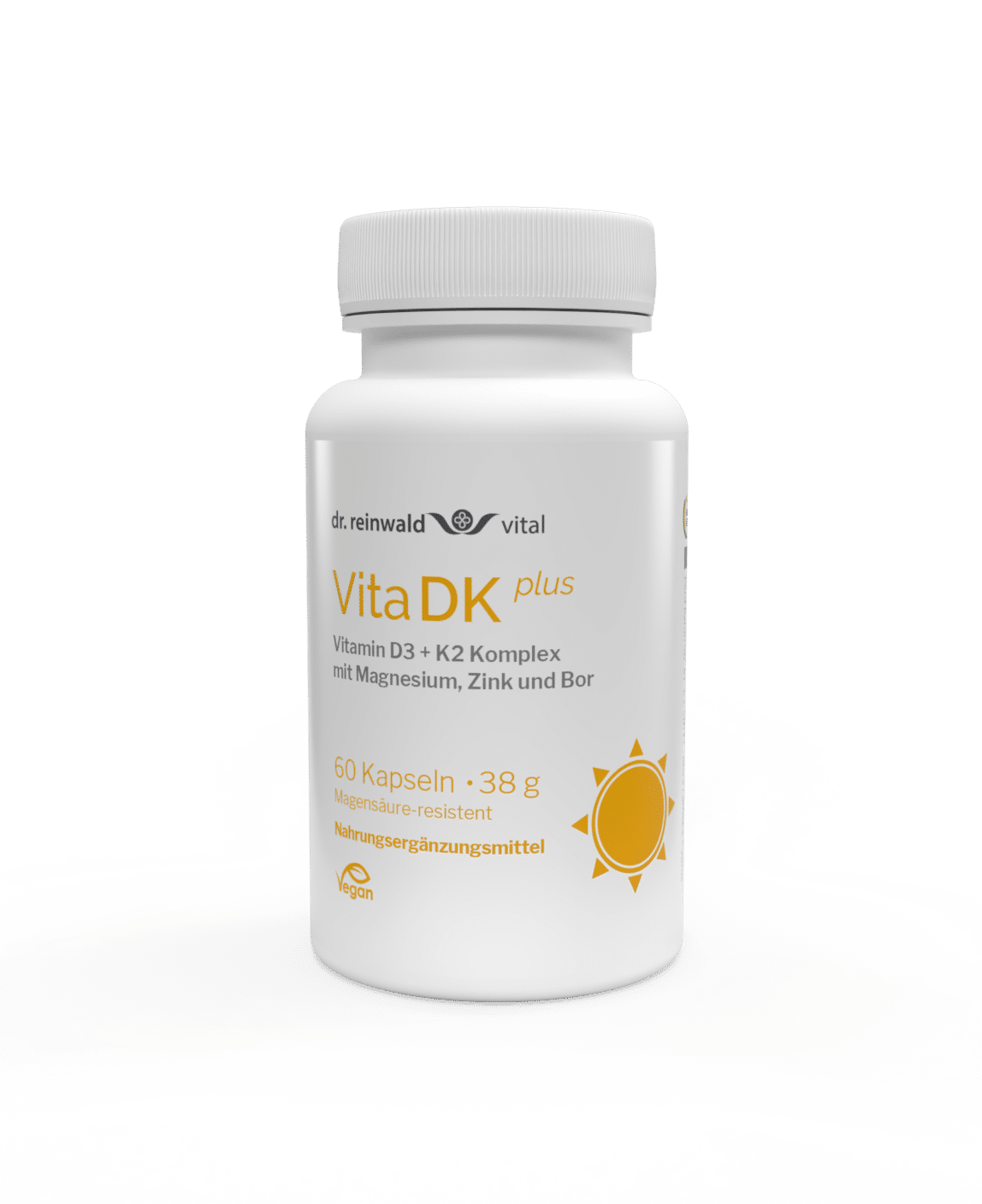Enzymes: the Workers in our Body
Enzymes are the workers in our body that have a significant impact on our vitality. To date, more than three thousand different enzymes have been identified in the human organism, which contribute to over ten thousand enzymatic reactions. One of the essential aspects of enzymes compared to most other catalysts or natural enhancers is their high selectivity and specificity, i.e. they “know” when, where and in which compartments or on which substances they have to act, almost as if they were small living beings. And maybe they are.
Enzymes and Food
In addition to the digestive and metabolic enzymes produced by the body itself, we ingest enzymes through food. At the same time, by eating healthy food, we also support the body’s own production synthesised by bacteria inside us. Regular consumption of enzymes and enzyme-rich foods such as fermentation products is a key to vibrant health, disease prevention and part of the anti-aging process where it helps to slow down aging. Every cell in our body needs enzymes for its biochemical functions. On the other hand, a lack of these enzymes or their limited effectiveness accelerates aging and impairs healing and recovery processes.
The Function of Enzymes
Some of the most important tasks of enzymes are in regulating the growth of the body from a single cell to a mature organism, converting food into energy, breaking down dead tissue, supporting hormonal processes or building certain substances in the cell, as well as important signaling functions. Enzymes help us digest, break down toxins, cleanse our blood, support our immune system, assist in anabolic metabolic processes to build structural and functional proteins etc.
Serrapeptase: the Silkworm Enzyme
Serrapeptase was discovered only a few decades ago by Japanese scientists as a metabolic product of an enterobacterium called Serratia marcescens in the intestine of the Japanese silkworm Bombyx mori. Silkworm larvae have been bred in China for over 4,600 years. The cocoon spun by the caterpillar is made of silk, one of nature’s most luxurious yet strongest and most durable fabrics. The researchers from Japan found out at that time that the function of serrapeptase in the intestine, with which the gut bacteria help the caterpillar, consists essentially of two tasks.
- The enzyme synthesized via the saliva, is used to digest the main food of the silkworm: the very resistant mulberry leaves.
- On the other hand, the caterpillar uses it to free itself quickly from the hard cocoon of silk protein after maturation, so that it can then fly off to a new life as a silkworm moth. In this case, the serrapeptase shows a special affinity for the dead protein molecules at the lower end of the strong, protein-rich silk threads that make up the cocoon. Silk is composed of special proteins that are secreted and spun by the caterpillar. The silk is held together by the nearly insoluble fibroin and a glue-like layer of another protein called sericin. It is an extremely strong, robust and resistant protein compound, and yet it can be easily broken down by serrapeptase. The enzyme literally melts away the dead tissue of the cocoon, quickly releasing the caterpillar into metamorphosis, which in turn protects it from predators.1
These special enzymatic activities of serrapeptase and the high affinity for dying, necrotic, but not living tissue, which enable the caterpillar to quickly break down the old armor that has protected it up to that point, are unique.
Serrapeptase: the Miracle Enzyme
No wonder this naturally occurring enzyme caught and spurred the interest of Japanese biochemists in the late 1970’s. During their research, they discovered that serrapeptase offered a variety of another health benefits. The repertoire of this enzyme is impressive. The silkworm and the bacterium Serratia marcescens, which lives in symbiosis with it, possess extraordinary health-supporting properties, which inspired the naturopathic and orthemolecular physician Dr. Hans Nieper to call it a “miracle enzyme” as early as the 1980s2.
As a fibrinolytic protease, it is in the nature of serralysin to support the organism in many of its cleansing tasks, such as the breakdown of protein structures that are subject to degradation in the intestine, but also systemically in the entire organism, such as in the blood. Therefore, we point out that serrapeptidase, due to its fibrinolytic function, also has blood-liquefying properties and can enhance the effect of blood-thinning and anticoagulant drugs. Due to its mucus-liquefying properties, it contributes to the self-cleaning of the respiratory tract and counteracts biofilms in the intestines. 3/4/5/6/7
History of Serratia marcescens and Serralysin
Researchers have only known more about the bacterium itself for a few years, although it was discovered as early as 1819 by the Venetian pharmacist Bartolomeo Bizio in connection with the “bread miracle” of Christ. The inhabitants of the city of Padua wondered about red stains on their polenta and related it to the transformation of bread and wine into the body and blood of Christ that allegedly occurred during a mass in Bolsena in 1263, i.e. in accordance with the doctrine of transubstantiation preached by the Church. An event immortalized by the famous painter Raphael in a fresco in the Apostolic Palace of the Vatican City. However, Bizio very quickly found out that the reason for the peculiar “bleeding” of the corn mass was a bacterium that expressed a red pigment, which we know today under the name of prodigiosin, which in English means something like “wonderful”. Bizio labeled the bacterium Serratia marcescens in honor of the Italian physicist Serafino Serrati, the appendix referring to the rapid decay of the pigment.
Meanwhile, scientists have even been able to demonstrate that prodigiosin improves the rodents’ gut flora.8 Serratia marcescens, through its intestinal activities, even protects the malaria mosquito Anopheles sinensis from the effects of Plasmodium infestation and thus from the very pathogen of malaria that it can transmit to humans through its bite.9 The bacterium is therefore very helpful in many respects, including intestinal health.
Effect of Serratia marcescens
We now know numerous Serratia species. They belong to the large family of enterobacteria. The enterobacterium Serratia marcescens is the most common species. It is found not only in the intestine of the silkworm, but also everywhere in nature: in water and on the ground, in animals and plants such as zucchini, but also as a symbiont in the human intestines, where the germs break down organic substances and provide important enzymes, including serrapeptase.10 This shows that this ubiquitous microorganism has an important regulatory function in organic processes not only in the soil but also in the human biotope.
When bacteria cluster together, they form a protective barrier that allows them to multiply. If this happens to an low-oxygen and toxic environment, bacteria are forced to take other metabolic pathways such as nitrate or iron respiration to ensure survival. This leads to dysbiosis and inflammation in the gut. At the same time, the bacteria form biofilms as barriers to defend against antibiotics and other attacks. It is believed that proteolytic enzymes such as serrapeptase are able to dissolve and dilute the formation of these biofilms via proteolysis of the proteins contained in biofilms, similar to what happens in the cocoon of the silkworm, and so with other mucus-containing substances, such as in the respiratory tract. The effective range of action of the enzyme systemically is between pH 7 and 9, with the optimum being reached at 40° temperature. It is only denatured at a temperature of 50° and above.
Cat’s Claw as a Cofactor
The cat’s claw, along with Dragon Blood and Chanca Piedra, belongs to the three great plants that have been used in Latin America for thousands of years by indigenous population also in traditional folk medicine. It is preferably consumed as a tea by the peoples of ancient America to purify the mind and body and to protect against disease. In the traditional medicine of the curanderos in Middle and South America, cat’s claw occupies a similarly prominent position as dandelion and milk thistle in Europe or ginseng in Asia.
Discovery of Cat’s Claw
We owe our knowledge of this plant to a group of Austrian mountaineers who, during an Andean expedition in the lowlands of Peru in 1959, came across members of the Amazonian Asháninca tribe, from whom we also know the hallucinogenic liana juice drug ayahuasca, which they use for ritual-religious purposes. The “medicine men” of the Western expedition exchanged views with the curanderos of the tribe, which has settled the lowland jungle on the edge of the former Inca Empire for 5,000 years. In this way, the secrets of the plant reached the public and the West, where they aroused great scientific interest. The Spanish name for the cat’s claw is Uña de Gato. The taxonomically correct name is Uncaria tomentosa (Willd.) DC. Uncaria, of which two genera are native to Latin America, is a mighty vine of the redbud or coffee family (Rubiaceae). However, it does not grow as a tree or shrub like coffee, but as a liana high into the sky, with its widely branched trunks up to 30 cm thick, sometimes reaches a length of several 100 meters.
For the indigenous peoples, who call the plant “Villcacora”, which means something like sacred plant, the liana is considered a gift from the gods. According to an Asháninca legend, the healing powers of the cat’s claw was revealed by one of their gods to a tribesman who was out hunting. After an unsuccessful hunt, he stopped to rest, exhausted, and saw a mighty puma scratching the bark of a liana with its claws and drinking the sap of the plant. The hunter followed the example of the big cat and fell asleep after taking the drink. In his dream, the hunter saw himself trying his luck again and was able to kill a large armadillo with just one accurate arrow. Since then, the Asháninca have believed that the cat’s claw is a magical and at the same time healing and power-giving plant.11 The leaf tendrils of U. tomentosa are curved like a sickle and are also visually reminiscent of the shape of a cat’s claw.
Cat’s Claw in Science
Since the late 1990s, the scientific literature on the Uncaria genera has increased enormously and is currently meeting with ever-increasing interest, especially for the follow-up care of people suffering from post-Covid syndrome. Numerous publications – more than 700 – on the bioactive, antiviral and other properties of the plant and its related genera of the Uncaria family in Asia, which have also been examined in the meantime, such as U. Hook, U. sinensins or U. rhynchophylla are now available under PubMed alone, the largest online biochemistry and medicine database in the United States.1213 As of February 2022, there are even more than 255 studies for Uncaria tomentosa. 14
Ingredients of Cat’s Claw
The root of U. tomentosa contains at least 26 biochemically active plant substances. The main ingredients examined so far are, in addition to the important alkaloids, primarily sterols, triterpenes, and flavonoids such as procyanidin, epicatechin, catechin as well as phenolic compounds. The tannins isolated in cat’s claw are also found in green tea. The richness of plant constituents also explains their non-specific, numerous regulating and sometimes contradictory effects in the organism. Nature is just clever. It regulates in a non-specific and system-open way with the help of control and counter-control, not via simple mechanical attacks of inhibition or activation via mono-substances, as they typically occur in drugs. In other words, the plant contributes to the balancing of numerous regulatory circuits and feedback loops of important metabolic pathways in the organism.
References:
1 Sellman S: Serrapeptase, An Amazing Gift from The Silk Worm. 2003; World rights reserved.
2 Nieper Hans A, Alexander Arthur D., Eagle-Ogden GS: The Curious Man: The Life and Works of Dr. Hans Nieper. Garden City Park, NY: Avery Publishing Group; 1999.
3 Tiwari M. The role of serratiopeptidase in the resolution of inflammation. Asian J Pharm Sci. 2017 May;12(3):209-215. doi: 10.1016/j.ajps.2017.01.003. Epub 2017 Feb 1. PMID: 32104332; PMCID: PMC7032259.
4 Nakamura S et al: Effect of the proteolytic enzyme serrapeptase in patients with chronic airway disease. Respirology. 2003 Sep;8(3):316-20. doi: 10.1046/j.1440-1843.2003.00482.x. PMID: 12911824.
5 Sharma C et al: Serratiopeptidase, A Serine Protease Anti-Inflammatory, Fibrinolytic, and Mucolytic Drug, Can Be a Useful Adjuvant for Management in COVID-19. Front Pharmacol. 2021 Jun 24;12:603997. doi: 10.3389/fphar.2021.603997. PMID: 34248612; PMCID: PMC8265778.
6 Gupta P.V. et al: Antimicrobial and antibiofilm activity of enzybiotic against Staphylococcus aureus, in: A. Mendez-Vilas (Ed.), The Battle Against Microbial Pathogens: Basic Science, Technological Advances and Educational Programs, Formatex Research Center, 2015, pp. 364–372.
7 Mukherji R. et al: Role of extracellular proteases in biofilm disruption of gram positive bacteria with special emphasis on Staphylococcus aureus biofilms, (2015) Enz. Eng. 4 (1).
8 Li X, Tan X, Chen Q, Zhu X, Zhang J, Zhang J, Jia B. Prodigiosin of Serratia marcescens ZPG19 Alters the Gut Microbiota Composition of Kunming Mice. Molecules. 2021 Apr 9;26(8):2156. doi: 10.3390/molecules26082156. PMID: 33918541; PMCID: PMC8069934.
9 Bai L, Wang L, Vega-Rodríguez J, Wang G, Wang S. A Gut Symbiotic Bacterium Serratia marcescens Renders Mosquito Resistance to Plasmodium Infection Through Activation of Mosquito Immune Responses. Front Microbiol. 2019 Jul 18;10:1580. doi: 10.3389/fmicb.2019.01580. PMID: 31379768; PMCID: PMC6657657.
10 N.S.Kaviyarasi et al: Serrapeptase Gene of Serratia Marcescens from Plant Origin Expressed by Pichia Pastoris has Protease Activity; Indian Journal of Medical Research and Pharmaceutical Sciences June 2016; 3(6) ISSN: ISSN: 2349-5340; DOI: 10.5281/zenodo.55948.
11 Bäumler, Siegfried. Heilpflanzenpraxis heute – Arzneipflanzenporträts. Urban & Fischer; 3. Edition (21. Januar 2021).
12 Suchergebnis Uncaria PubMed:https://pubmed.ncbi.nlm.nih.gov/?term=Uncaria.
13 Kushida H, Matsumoto T, Ikarashi Y. Properties, Pharmacology, and Pharmacokinetics of Active Indole and Oxindole Alkaloids in Uncaria.
14 Search result Uncaria tomentosa PubMed; https://pubmed.ncbi.nlm.nih.gov/?term=Uncaria+tomentosa.
without GMO
without animal testing
without additives
without pesticides
without soy
immune system
blood circulation
airways


